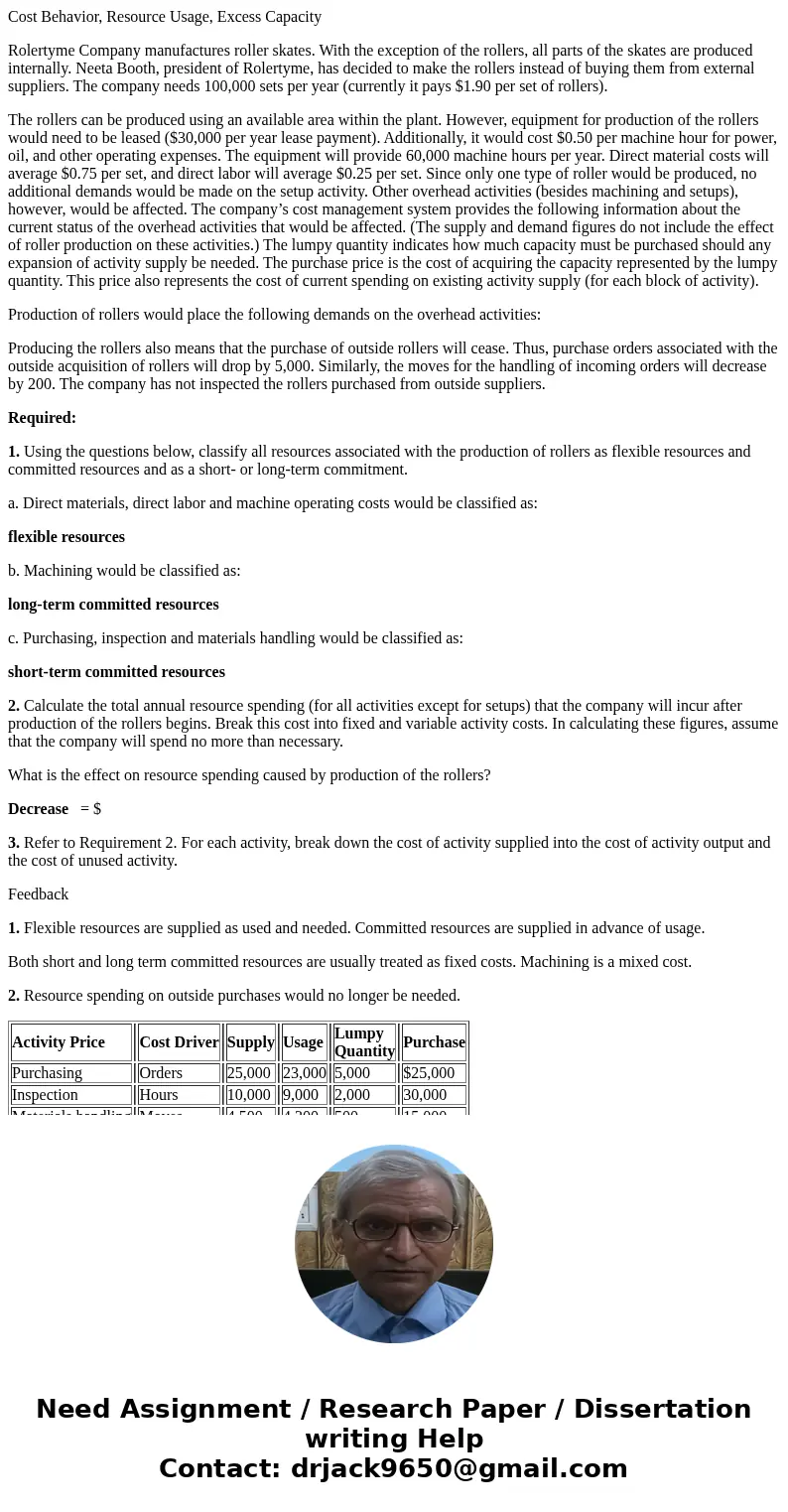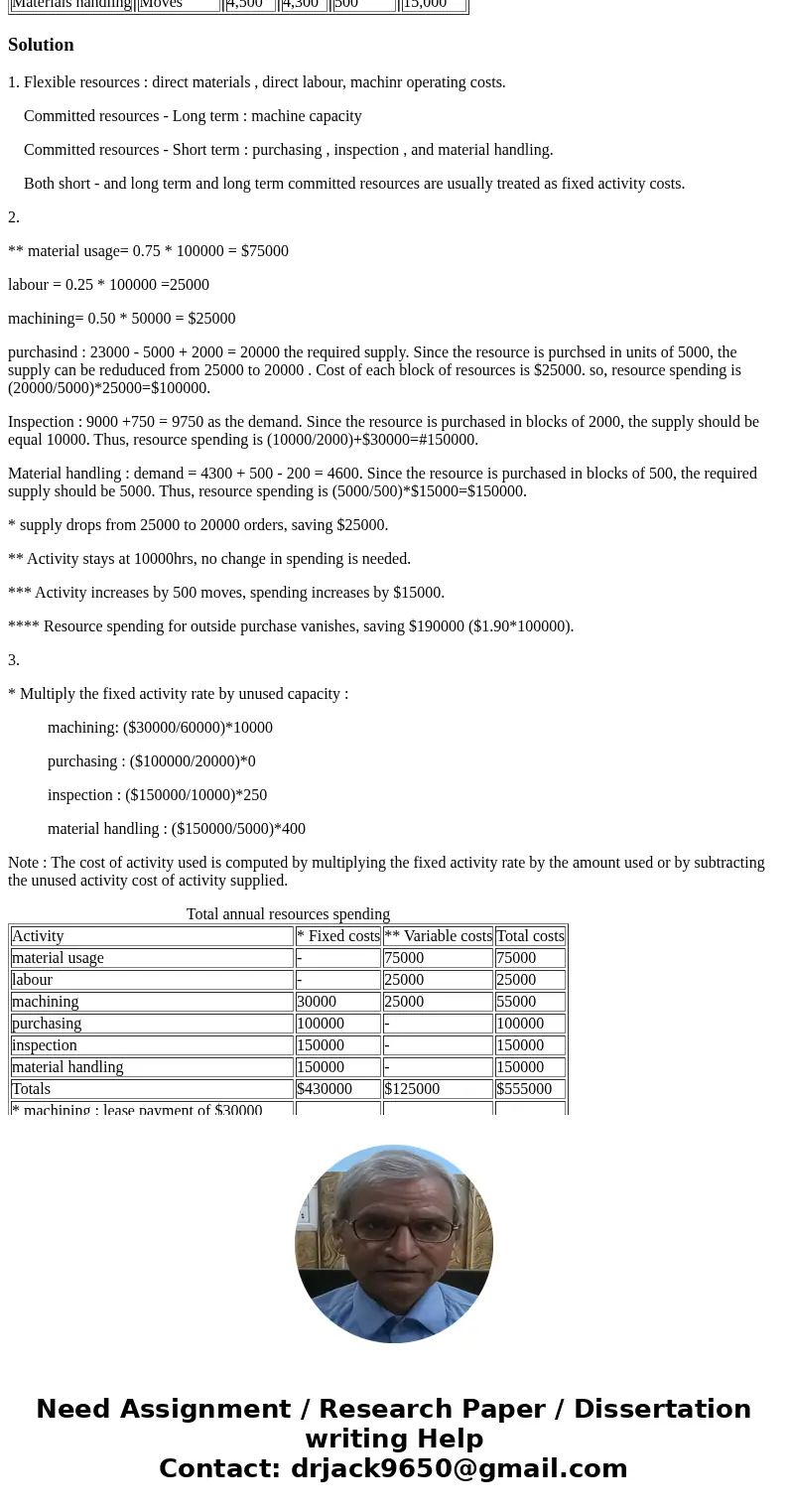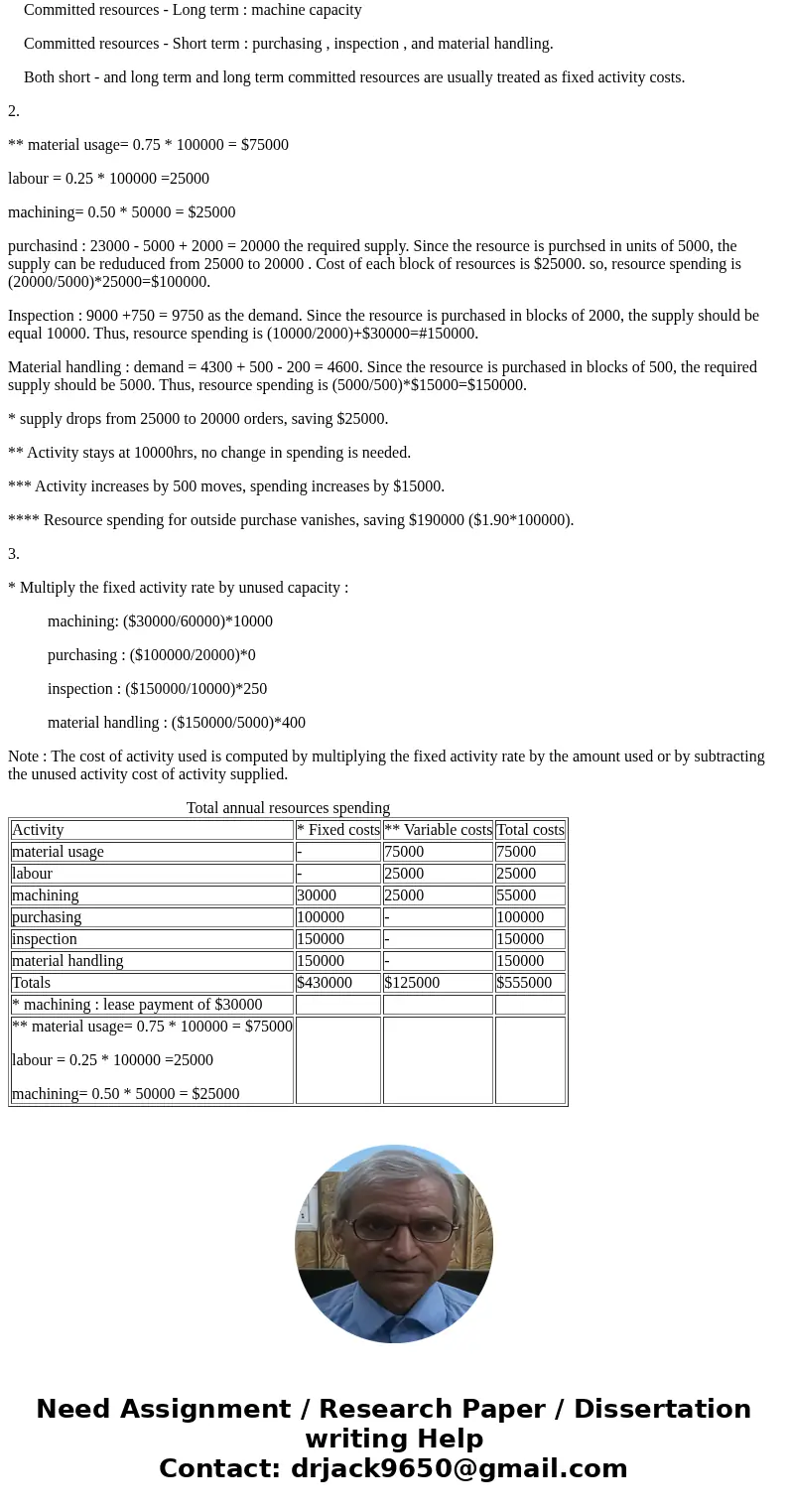Cost Behavior Resource Usage Excess Capacity Rolertyme Compa
Cost Behavior, Resource Usage, Excess Capacity
Rolertyme Company manufactures roller skates. With the exception of the rollers, all parts of the skates are produced internally. Neeta Booth, president of Rolertyme, has decided to make the rollers instead of buying them from external suppliers. The company needs 100,000 sets per year (currently it pays $1.90 per set of rollers).
The rollers can be produced using an available area within the plant. However, equipment for production of the rollers would need to be leased ($30,000 per year lease payment). Additionally, it would cost $0.50 per machine hour for power, oil, and other operating expenses. The equipment will provide 60,000 machine hours per year. Direct material costs will average $0.75 per set, and direct labor will average $0.25 per set. Since only one type of roller would be produced, no additional demands would be made on the setup activity. Other overhead activities (besides machining and setups), however, would be affected. The company’s cost management system provides the following information about the current status of the overhead activities that would be affected. (The supply and demand figures do not include the effect of roller production on these activities.) The lumpy quantity indicates how much capacity must be purchased should any expansion of activity supply be needed. The purchase price is the cost of acquiring the capacity represented by the lumpy quantity. This price also represents the cost of current spending on existing activity supply (for each block of activity).
Production of rollers would place the following demands on the overhead activities:
Producing the rollers also means that the purchase of outside rollers will cease. Thus, purchase orders associated with the outside acquisition of rollers will drop by 5,000. Similarly, the moves for the handling of incoming orders will decrease by 200. The company has not inspected the rollers purchased from outside suppliers.
Required:
1. Using the questions below, classify all resources associated with the production of rollers as flexible resources and committed resources and as a short- or long-term commitment.
a. Direct materials, direct labor and machine operating costs would be classified as:
flexible resources
b. Machining would be classified as:
long-term committed resources
c. Purchasing, inspection and materials handling would be classified as:
short-term committed resources
2. Calculate the total annual resource spending (for all activities except for setups) that the company will incur after production of the rollers begins. Break this cost into fixed and variable activity costs. In calculating these figures, assume that the company will spend no more than necessary.
What is the effect on resource spending caused by production of the rollers?
Decrease = $
3. Refer to Requirement 2. For each activity, break down the cost of activity supplied into the cost of activity output and the cost of unused activity.
Feedback
1. Flexible resources are supplied as used and needed. Committed resources are supplied in advance of usage.
Both short and long term committed resources are usually treated as fixed costs. Machining is a mixed cost.
2. Resource spending on outside purchases would no longer be needed.
| Activity Price | Cost Driver | Supply | Usage | Lumpy Quantity | Purchase | |||||
| Purchasing | Orders | 25,000 | 23,000 | 5,000 | $25,000 | |||||
| Inspection | Hours | 10,000 | 9,000 | 2,000 | 30,000 | |||||
| Materials handling | Moves | 4,500 | 4,300 | 500 | 15,000 |
Solution
1. Flexible resources : direct materials , direct labour, machinr operating costs.
Committed resources - Long term : machine capacity
Committed resources - Short term : purchasing , inspection , and material handling.
Both short - and long term and long term committed resources are usually treated as fixed activity costs.
2.
** material usage= 0.75 * 100000 = $75000
labour = 0.25 * 100000 =25000
machining= 0.50 * 50000 = $25000
purchasind : 23000 - 5000 + 2000 = 20000 the required supply. Since the resource is purchsed in units of 5000, the supply can be reduduced from 25000 to 20000 . Cost of each block of resources is $25000. so, resource spending is (20000/5000)*25000=$100000.
Inspection : 9000 +750 = 9750 as the demand. Since the resource is purchased in blocks of 2000, the supply should be equal 10000. Thus, resource spending is (10000/2000)+$30000=#150000.
Material handling : demand = 4300 + 500 - 200 = 4600. Since the resource is purchased in blocks of 500, the required supply should be 5000. Thus, resource spending is (5000/500)*$15000=$150000.
* supply drops from 25000 to 20000 orders, saving $25000.
** Activity stays at 10000hrs, no change in spending is needed.
*** Activity increases by 500 moves, spending increases by $15000.
**** Resource spending for outside purchase vanishes, saving $190000 ($1.90*100000).
3.
* Multiply the fixed activity rate by unused capacity :
machining: ($30000/60000)*10000
purchasing : ($100000/20000)*0
inspection : ($150000/10000)*250
material handling : ($150000/5000)*400
Note : The cost of activity used is computed by multiplying the fixed activity rate by the amount used or by subtracting the unused activity cost of activity supplied.
| Activity | * Fixed costs | ** Variable costs | Total costs |
| material usage | - | 75000 | 75000 |
| labour | - | 25000 | 25000 |
| machining | 30000 | 25000 | 55000 |
| purchasing | 100000 | - | 100000 |
| inspection | 150000 | - | 150000 |
| material handling | 150000 | - | 150000 |
| Totals | $430000 | $125000 | $555000 |
| * machining : lease payment of $30000 | |||
| ** material usage= 0.75 * 100000 = $75000 labour = 0.25 * 100000 =25000 machining= 0.50 * 50000 = $25000 |



 Homework Sourse
Homework Sourse